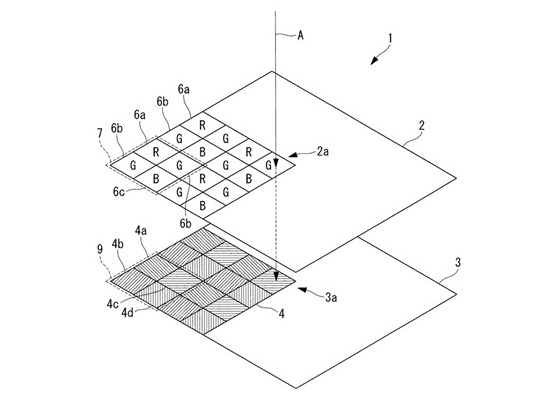Featured Products
Olympus is working on a multi-layered image sensor that would include a secondary layer to mimic the presence of a polarizing filter in order to reduce reflections and to increase contrast without an external polarizing filter.
Polarizing filters are often found in the bags of photographers who capture a lot of landscape photos or scenes that include a lot of water or skies. The reason for that consists of the effects brought to the table by a polarizing filter, such as the reduction of reflections.
In order to reduce the dependence on polarizing filters, Olympus is developing a special two-layer sensor. One layer consists of the sensor itself, while the other layer consists of a thin sheet that records light polarization information and that replicates the presence of a polarizing filter. This could lead to multi-layered sensors in consumer cameras that would no longer require a polarizing filter to be attached to a lens.

A sketch depicting the patent for the Olympus dual-layer sensor which includes an integrated polarizing filter.
Olympus patents multi-layered sensor with built-in polarizing filter
Sunlight is not polarized, but polarization effects show up when it encounters different light propagation environments, such as the atmosphere or water. In simple terms, light reflects when it encounters things during its travels.
Photographers are often affected by such issues and they need to make blue skies darker, to add a little contrast to the clouds, and to cut down water reflections. This can be done with the help of a polarizing filter, which can be attached to a lens’ front element.
Olympus is working on a way to remove the need for a dedicated polarizing filter. The way to do it is a multi-layered sensor. The Japan-based company has just patented a dual-layer sensor that includes a secondary layer designed specifically to record light polarization information.
Why is this such a big deal?
The top layer will record color information as well as the brightness. This also happens in regular sensors found in most cameras. As stated above, there will be another layer below the one that records color information, but the second layer will capture the information related to the polarization of the light.
The secondary layer will mimic the presence of a polarizing filter and it will be useful because these effects cannot be entirely replicated in post-processing without such filter.
Moreover, a dedicated polarizing filter will cut down the amount of light that hits the sensor. As there will be no polarizing filter and its effects will be replicated without any effort, then this will become a win-win situation for photographers.
This is only a patent for the time being. However, things could change soon, so stay tuned!






































